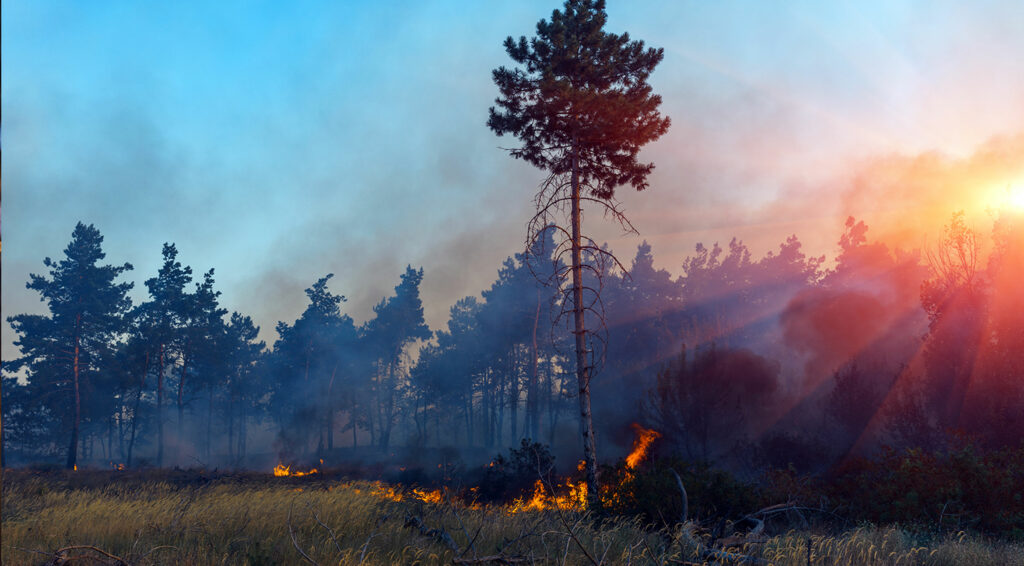Creating an EV charging infrastructure to meet net zero emissions targets
The UK is legally bound by the Climate Change Act to achieve net zero emissions by 2050. The Climate Change Committee (CCC) is tasked with advising the government on setting and meeting carbon budgets, preparing for climate change, and monitoring progress in reducing emissions.
The transport sector is a key target area, since transport-related emissions must be cut to almost zero if the UK is to achieve its net zero target by 2050. As a result, ultra-low emission vehicles (ULEVs) will play a key role in delivering emission reductions – meaning the UK’s charging infrastructure will need to be sufficient to support the required uptake in electric vehicles.
The CCC commissioned our Data Science specialists at SYSTRA to carry out a study to determine the requirements for the UK’s future EV charging infrastructure. Specifically, SYSTRA was asked to focus on:
- How peak traffic flow on the Strategic Road Network (SRN) matches that of peak EV charging demand.
- The anticipated infrastructure for en-route charging required to meet demand through to 2050.
Mapping peak traffic flows against EV charging demand
SYSTRA conducted in-depth analysis of the relationship between peak charging demand and peak traffic flows on the road network. We selected 29 routes across Great Britain and obtained traffic counts (from National Highways and Traffic Scotland) alongside Zapmap charging data.
We then used the CCC’s En Route Charging Optimisation tool (ERCO) to model and determine the optimal charging network to meet a number of different demand scenarios. In our report we provided the CCC with novel ways to present results using interactive elements to make the insights clearer and more engaging.
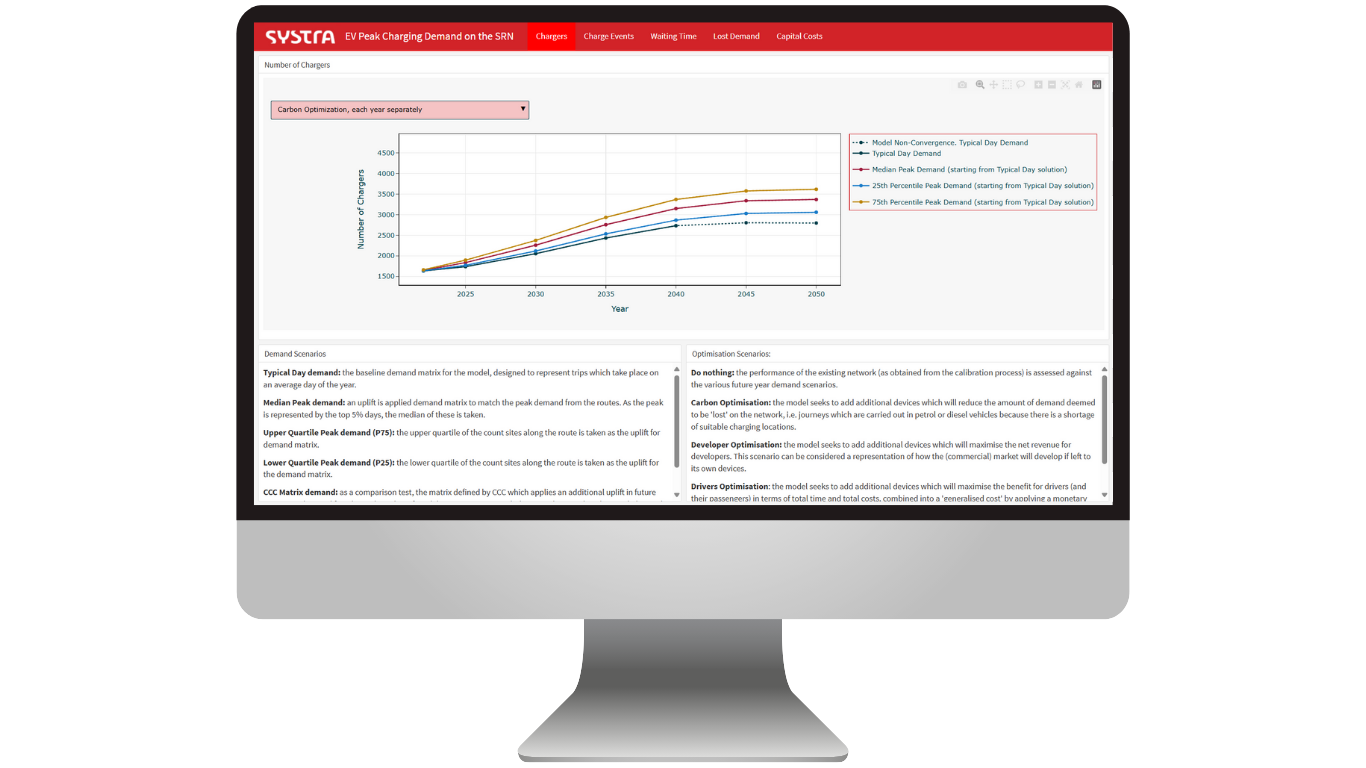
The busiest days for traffic flows were found to be Fridays, with most routes sharing similar peak days. Charging demand did not have the same profile and was spread more evenly throughout the week, although still with a general concentration around the weekend. Our analysis therefore found no noticeable correlation between peak demand and peak traffic days. The days when en-route charging is at a peak may be those days when people are taking longer journeys, and these are not necessarily the days when traffic flows are highest.
The key findings of the research were:
- There are substantial peaks in both traffic flows and charging demand above typical levels, which need to be taken into account when planning the provision of charging infrastructure.
- The peaks of both traffic flows and charging demand are focused around weekends, but charging demand peaks do not always correspond with traffic flow peaks. Peak dates are also different between different routes.
- The optimal charging network designed to cater for typical levels of demand will not be sufficient to meet demand peaks. To maintain acceptable wait times and enable drivers to charge reliably on peak days, the EV charging network will need to be 12-18% larger by 2035 than if it were planned purely to meet typical demand.
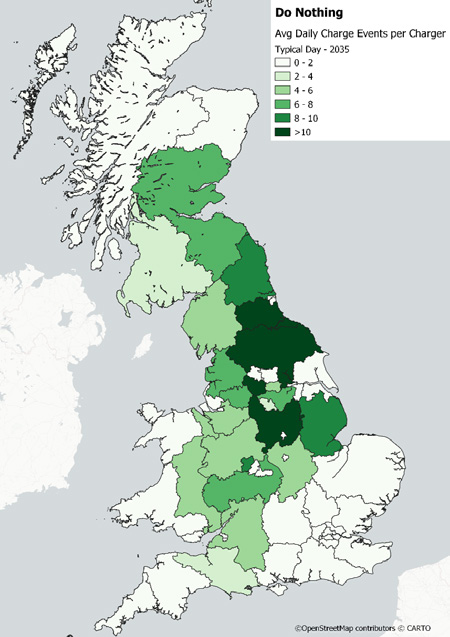
Demand on the Strategic Road Network – Climate Change Committee)
Smart modelling tools and latest data combine to provide vital insights
SYSTRA used the ERCO tool to carry out scenario tests on:
- Typical demand through to 2035.
- How the typical network copes with anticipated peak demand.
- The infrastructure updates required and associated costs to meet demand.
Traffic flow and charger information was used to update the ERCO tool, so that we could assess the en-route charging infrastructure needs from a base year of 2022 through to 2050. We tested a number of scenarios, including Do Nothing, Carbon Optimisation, Developer Optimisation and Driver Optimisation.
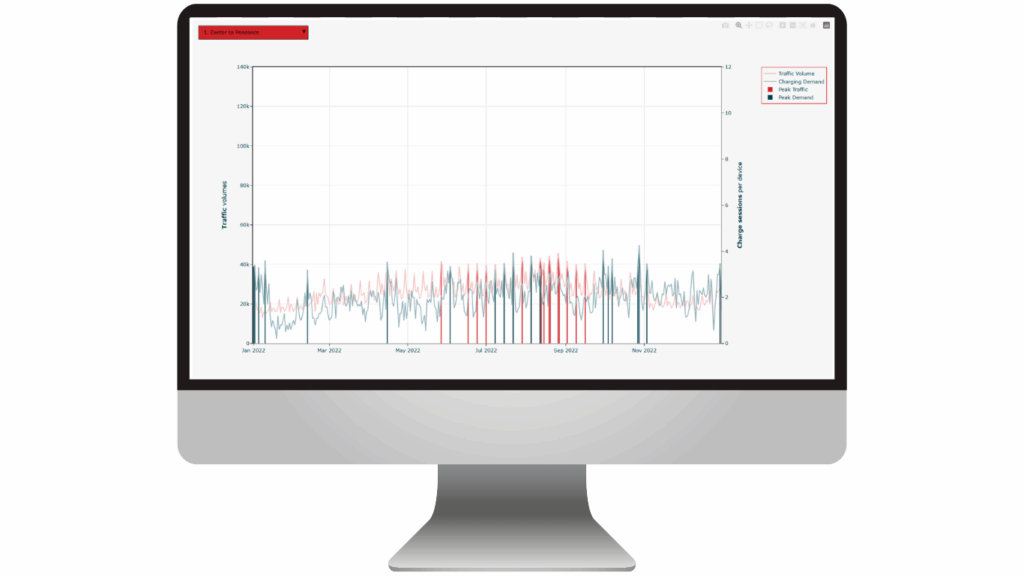
Carbon Optimisation was the core scenario used within this analysis, as it considers the requirements of the charging network if we are to reduce ‘lost’ demand and keep waiting times to an acceptable level. The outputs were analysed to consider the number of additional chargers and the capital costs required, as well as the geographical areas where most intervention was required.
Modelling results and charging data were presented in interactive dashboard visuals that accompanied the report and allowed readers to select scenarios and locations without the need for extensive static outputs in appendices. These outputs added value through the efficient presentation of large datasets yet in a lightweight HTML format that engaged the audience.
Report highlights EV charging strategy to support net zero
The study results showed that additional chargers need to be planned to cater for peak demand, otherwise the waiting times for drivers will exceed the acceptable 12-minute limit by 2035. Without these additional chargers, a fifth of demand could be lost on peak days by 2040. The areas where pressures on the network appear the greatest, and where the majority of additional chargers would be needed, were the Midlands and Yorkshire.
Our report produced drew three main conclusions on the actions required:
- The Government and the charging industry must actively monitor provision of and plans for charging infrastructure, as the fleet composition changes, to ensure that it will meet drivers’ needs.
- Network planning must take account of peak demand, not just typical demand. This could be achieved through either additional permanent EV charging infrastructure or more flexible mobile solutions.
- Government support or regulation may be needed to ensure that this occurs, as investment from the private sector is expected to focus on installing chargepoints in locations where there is high utilisation all year round.
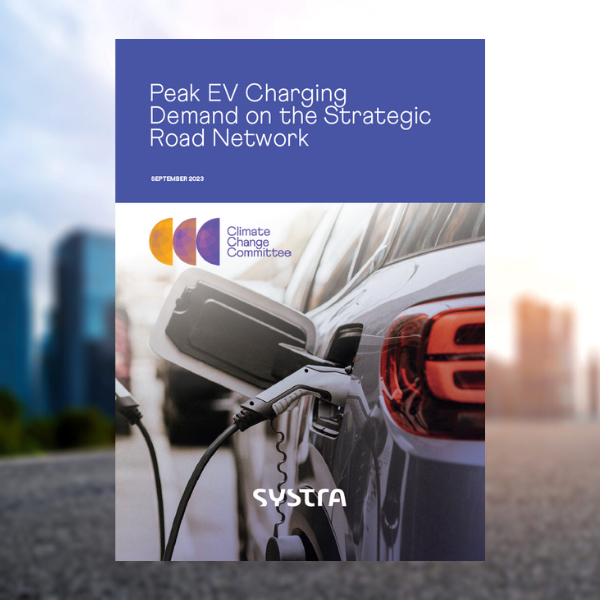
Visit the Climate Change Committee website to download the report.
How can our experts help?
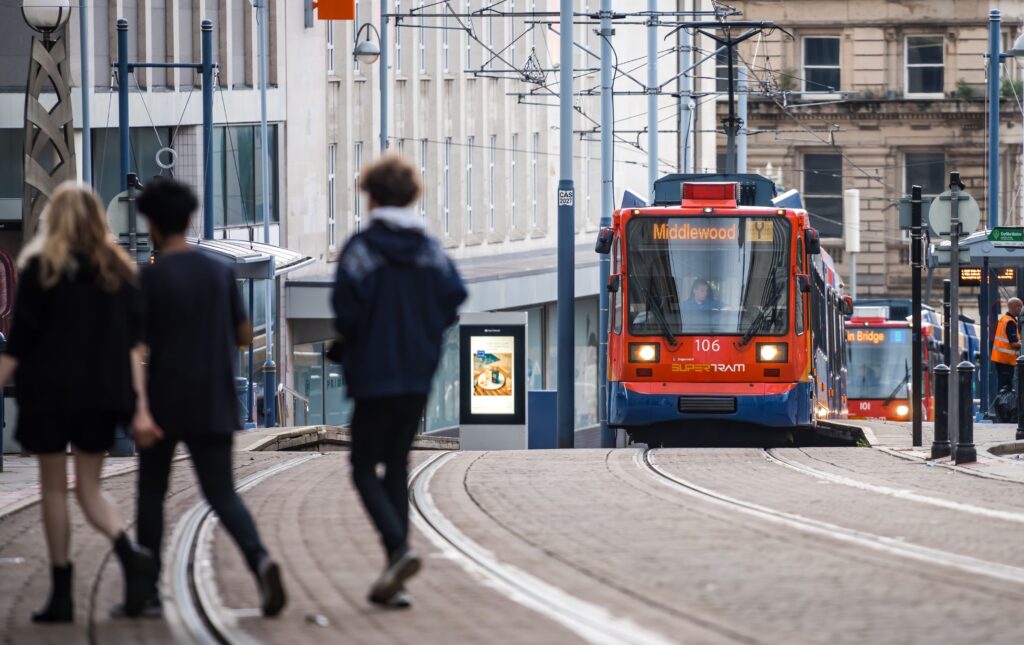
Our Markets
Read more sur Our Markets


 Australia
Australia  Brazil
Brazil  Canada
Canada  Chile
Chile  China
China  Columbia
Columbia  Denmark
Denmark  Egypt
Egypt  France
France  India
India  Indonesia
Indonesia  Ireland
Ireland  Italy
Italy  Malaysia
Malaysia  New Zealand
New Zealand  Norway
Norway  Panama
Panama  Peru
Peru  Poland
Poland  Portugal
Portugal  Saudi Arabia
Saudi Arabia  Singapore
Singapore  South Korea
South Korea  Spain
Spain  Sweden
Sweden  Taiwan
Taiwan  Thailand
Thailand  Türkiye
Türkiye  United States
United States  Vietnam
Vietnam 

